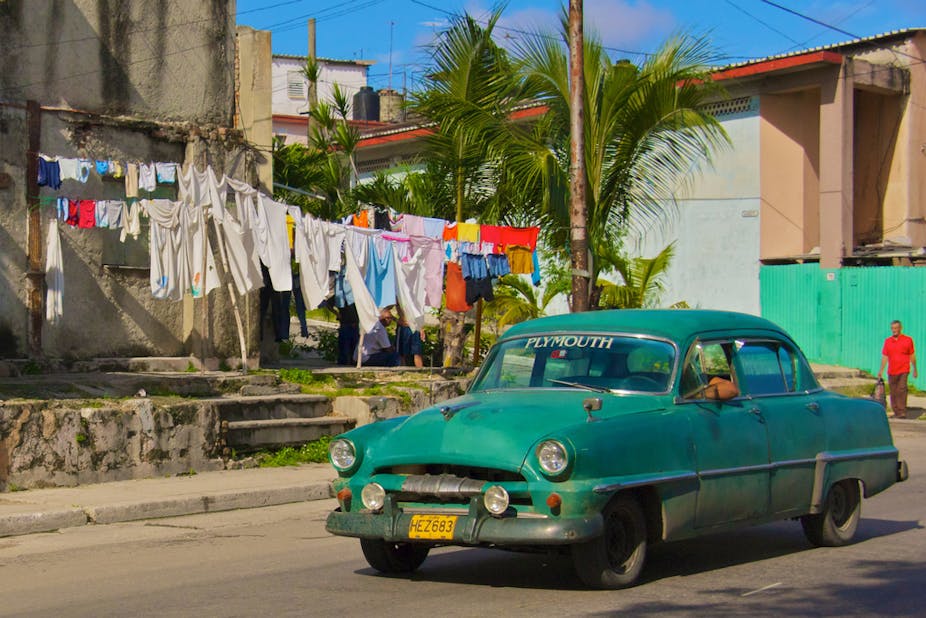Cuba has imposed new limits on the amount of goods that travellers can bring into the country. The new measures will be unpopular with many involved in the trade from suppliers to customers, and at first sight they appear futile and counter-productive.
The informal trade in consumer goods and domestic equipment involves huge bundles and packages being brought to the island by visiting Cuban-Americans. The strong growth of these imports in recent years has been the result of reforms in both the US and Cuba.
In 2009 Barack Obama lifted travel restrictions to Cuba for Cuban-Americans that had been imposed by his predecessor, George W Bush, allowing them to travel back and forth to visit relatives on the island without any limit to the number of journeys. Meanwhile, Raúl Castro, Cuba’s president, has removed the requirement for Cubans planning foreign trips to obtain an exit visas and fostered the growth of new private businesses in Cuba. This has increased the purchasing power of successful entrepreneurs and created new demand for business equipment and consumer goods to sell.
The trade has allowed Cubans to acquire goods that are otherwise scarce or very expensive. Families on both sides of the Florida Straits have been using the trade to circumvent restrictions created by both US sanctions, which prohibit the export of US consumer goods to Cuba, and Cuba’s centrally controlled economy, in which the state has a near-monopoly on imports. The result of the restrictions has been a lack of access to US goods, poor quality substitutes purchased from distant markets, and persistent shortages in Cuban shops.
The informal trade has been welcomed by Cubans on the island with hard currency to spend. But it’s a problem for the broader economy as the demand for these imports draws precious hard currency out of the country. It also exacerbates growing income inequality within Cuba by increasing the relative economic advantage enjoyed by Cubans with family in the US.
The Cuban government, by restricting rather than banning this trade, seems to recognise that it is neither possible nor desirable to end it. The measures that have now taken effect represent a partial and temporary fix, which is designed to placate those Cubans who are unable to benefit from the trade but will aggravate frustrations among the traders and their customers.
The apparent arbitrariness of the rules invites ridicule: as the foreign press has noted, the new rules are 41 pages long, and state:
Travelers will now be allowed to bring in 22 pounds (10 kilos) of detergent instead of 44; one set of hand tools instead of two; and 24 bras instead of 48.
And at a time when Castro has called for restrictions on non-state economic activity to be removed, the restrictions seem anachronistic as well as ridiculous.
But, with a dual currency system in which a severely undervalued Cuban peso gives those with access to hard currency – or the “Convertible peso” — enormous relative economic privilege, the socialist government feels obliged to “do something”, while it attempts to grapple with the deeper causes of inequality and shortages.

In preparation for a reform of the currency system, the authorities have been trying to build international reserves. And, although the planned currency unification will not solve the problem overnight, it is necessary to eventually narrow the gap between Cuban peso earners and the privileged minority with ready access to hard currency.
Beyond this reform, the state importers, distributors and retailers need to become more responsive to consumer preferences, and Cuban productive capacity needs to grow. These challenges are on the agenda of a process of profound, albeit gradual and cautious, transformation of the economic system that is currently underway in Cuba.
But even if the Cuban government were to successfully deal with all these shortcomings, the urge among Cuban-American visitors and returning Cubans to heave enormous bundles of goods from the US would not disappear, so long as the US government maintains its trade sanctions. In effect, US policy forces its exports to Cuba to be channelled through this route.
The route also provides images that fit the US anti-Castro narrative – of US plentitude and Cuban shortages – while at the same time ensuring that the money flows only one way: from Cuba to the US. Meanwhile, paradoxically, US restrictions on Cuban informal imports into the American “free market” are very much tighter than Cuban restrictions on US imports, as anyone arriving in the US from Cuba with Cuban cigars or rum in their luggage can testify.
Although these latest restrictions by the Cuban government are clearly cumbersome, discriminatory and inefficient, the biggest obstacle to the normalisation of trade between the US and Cuba remains US sanctions.

